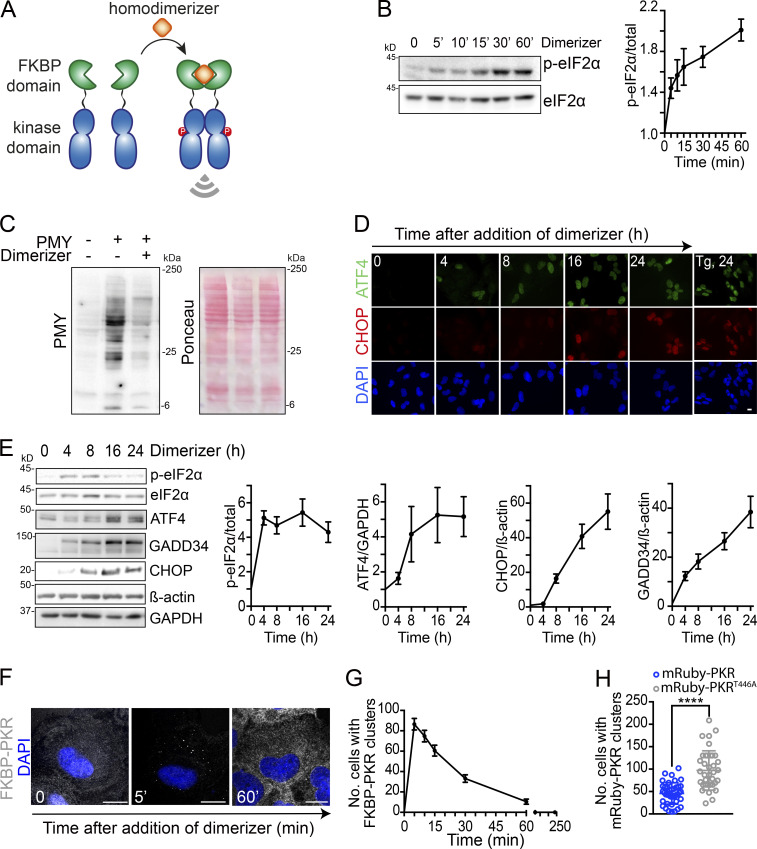Figure 3.
PKR cluster formation requires ligand binding to PKR’s sensor domain. (A) Schematic representation of the pharmacogenetic approach for PKR activation using a synthetic dimerizer ligand. (B) Western blots showing forced dimerization of PKR results in phosphorylation of eIF2α. Right: Quantification of the extent of eIF2α phosphorylation (mean and SEM, N = 3 experiments). (C) Western blot showing forced-dimerization of PKR results in global protein synthesis shutdown as assessed by the abundance of puromycilated peptides. (D) Representative micrographs showing that forceddimerization of PKR results in accumulation of ATF4 and CHOP. Tg, 24, thapsigargin treatment (300 nM, 24 h; positive control). (E) Western blots showing forced-dimerization of PKR results in induction of canonical ISR target genes. β-Actin, GAPDH, loading controls. The right panels show the quantification of the data (mean and SEM, N = 3 experiments). (F) Representative micrograph showing that forced dimerization of PKR results in formation of PKR clusters. Scale bar: 10 µm. (G) Quantification of the data in panel F (mean and SEM); N = 3 experiments, n > 500. (H) Quantification of the number of cells with mRuby-PKR and catalytically inactive mRuby-PKRT446A clusters 90 min after poly I:C treatment (N = 3 experiments, n > 500; ****, P < 0.0001, unpaired Student’s t test, nonparametric). Source data are available for this figure: SourceData F3.

